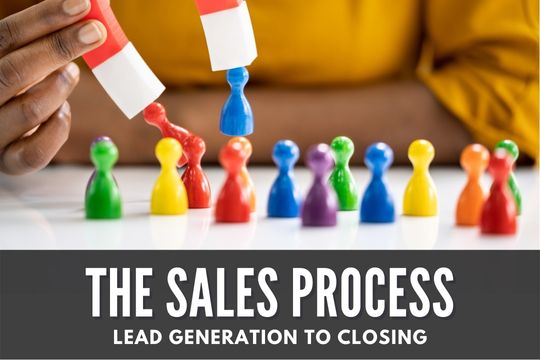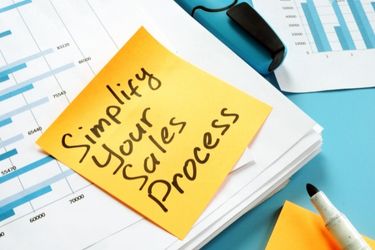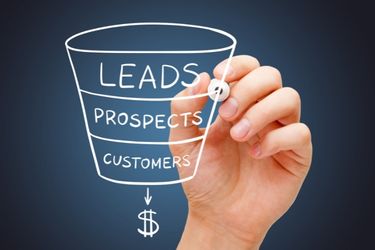
We all know that sales are a numbers game, meaning the more leads you generate, the more you convert into sales. One problem often comes after a lead generation campaign is turned on: poor quality leads and a disconnected sales team.
How do you generate quality leads? And what happens after that? This article will help explain why lead generation is so important and how to create a continuous sales process that generates revenue.

Lead generation is the first step in the sales process if you're in a sales role. As part of your job description, it's up to you to generate enough leads so that sales reps can close deals and meet their quotas. In other words, if they don't have enough prospects at any given time, they'll lose out on revenue opportunities because their pipeline will dry up.
What does this mean for companies? Well, the more leads a company has come in from sales reps like yourself, the more likely it is that those leads will turn into actual customers (and hopefully return customers). This means more revenue for both parties involved—you make more money for every sale, and so does your employer by getting paid before any work goes out the door.
In short, generating quality leads should be a top priority for anyone interested in ensuring their business continues thriving over time!
From lead generation to closing the sales process, prospecting and lead qualification can make or break your sales funnel. Simply put, if you get a bunch of leads that can't afford your product or don't qualify, you'll waste time and money trying to work these leads that won't convert.
Through a lead qualification process, you can ask specific, targeted questions that will determine whether a prospective lead is worth pursuing or not. For example, asking, “Even with the solutions you have, what pain points are you experiencing?”
The prospect may have pain points that have nothing to do with your product, which means it would be a waste to the sales team, or the prospect could provide you with many pain points that your product helps with. These can turn into talking points for your sales team later in the process.

The sales process is the series of steps to convert a lead into a customer. It's important to understand the different stages of your company's sales process and how they can help you close more deals.
There are multiple stages in the typical sales cycle: prospecting, qualification, pitching, and closing. There are typically four main activities that take place during each stage:
Each business should tailor its sales process to the company's unique needs. After all, your inventory, sales team, production process, and marketing goals are unlike any other.
A sales process is how a company sells its products or services. It's important to have a clear understanding of the steps in your sales process so that you can develop a strategy for closing deals.
If you know that your sales process has a few holes, a good way to start planning a new sales process is by studying a few of the top companies in your industry. There are many great examples, so it's not hard to find inspiration! It might also be helpful to look at what successful companies are doing, such as Amazon or Zappos.
You also want to look at your company and how the sales team is currently closing deals. Is there a disconnect between lead generation and sales? Is marketing disconnected from sales? Does your sales team have a smart script to fall back on to deal with objections? This is where you’ll see bottlenecks in your sales process.
The next step is figuring out where in your business you need help improving. Where do things get stuck? Which steps are redundant or unnecessary? What systems do you need in place for better tracking and accountability?
Once again, many tools can help with this, such as a customer relationship manager or CRM. With these tools and some solid brainstorming sessions under your belt, it's time to put together all those great ideas into something tangible: a specific plan outlining each step of how leads will become customers who purchase from us again!

If you’re looking to close more deals, it’s important to know how to qualify leads. Qualifying a lead is determining whether a prospect has the needs and budget requirements that will make them a good fit for your product or service.
When qualifying prospects, there are four main areas you want to look at:
Sales cycles are a series of steps, or phases, that you must go through to close the sale. This process can vary depending on your industry and customer type. That’s why you’ll want to take this information and customize your sales process to work seamlessly for your business.
We recommend starting with lead generation, which is the first step toward closing a sale. You want to create an effective pipeline to get the most out of your leads.
A great way to do this is by using lead nurturing campaigns—these are automated messages sent based on specific actions by prospects (such as visiting a web page or downloading something). They help keep leads warm, so they’re ready when it comes time for sales reps to start working with them!

Buyers are more empowered. The internet has provided them access to information previously available only to those with the resources to spend on it. Now anyone can read about products or services online, meaning buyers have a wealth of knowledge at their fingertips when looking for a solution to their problems.
They also know what they want and can be very specific in what they want from you—and if they don’t get it from you, they will look elsewhere (or do it themselves).
Today’s digitally connected consumers are no longer content simply hearing what someone has told them; today's buyer expects proof--and proof means data! When coaching your sales team, you’ll want to provide great data that your prospects will love to hear–even better if you have a link to a case study or video to share.
In summary, the sales process is a lot of work. It’s not just about making a great first impression and ensuring your website is optimized for search engines. You need to research to be prepared for any objections or questions from potential buyers and then respond with the best possible solution. Marketing plays an important role in creating leads and closing sales, but it's also important to understand how your prospects buy so that you can tailor content accordingly.
Want more tips like these? Get new information on digital marketing, lead generation, and new strategies in sales by subscribing to our emarketing newsletter.
Lead generation is the practice of attracting potential customers who show interest in your product or service. It matters because without a steady inflow of prospects, the pipeline dries up, quotas are missed, and revenue stalls. More quality leads equal more chances to close deals.
Use a structured qualification process. Ask targeted questions about budget, authority, needs, and motivation before passing a contact to sales. This filters out prospects who cannot buy or are a poor fit, saving time and focusing effort on opportunities that are likely to convert.
A common cycle includes prospecting, lead qualification, pitching, closing, and delight. You find potential clients, decide who merits pursuit, present solutions, finalize the deal, then nurture the customer for repeat business. Mapping each stage clarifies responsibilities and keeps revenue flowing continuously.
Evaluate four areas: Budget – can they pay? Authority – do they influence purchasing? Needs – does your offering solve their problem? Motivation – are they eager to act now? A lead meeting all four factors is far more likely to move through the funnel.
Audit each stage. Compare lead counts, conversion percentages, and time spent from prospecting to close. Talk with marketing and sales reps to spot disconnects, redundant steps, or missing tools like a CRM. Then redesign scripts, automation, or handoffs to streamline the flow and improve results.